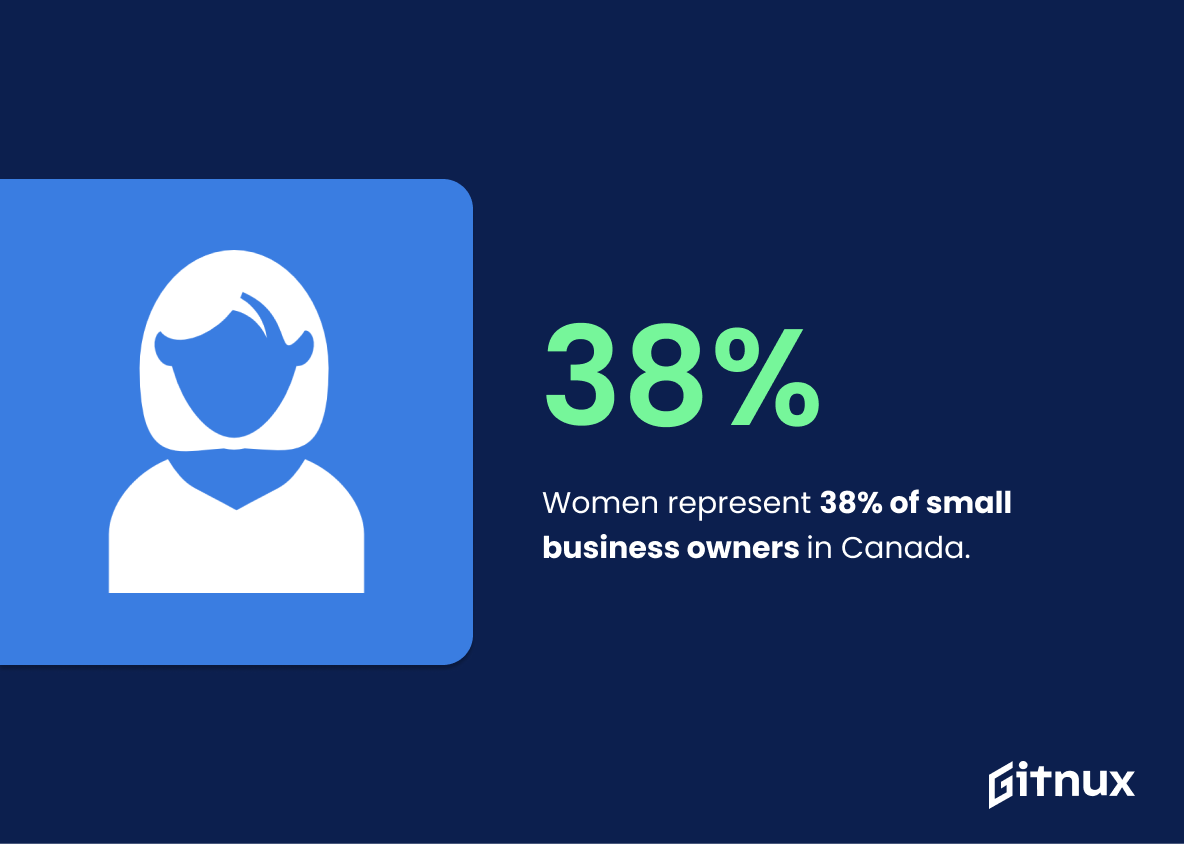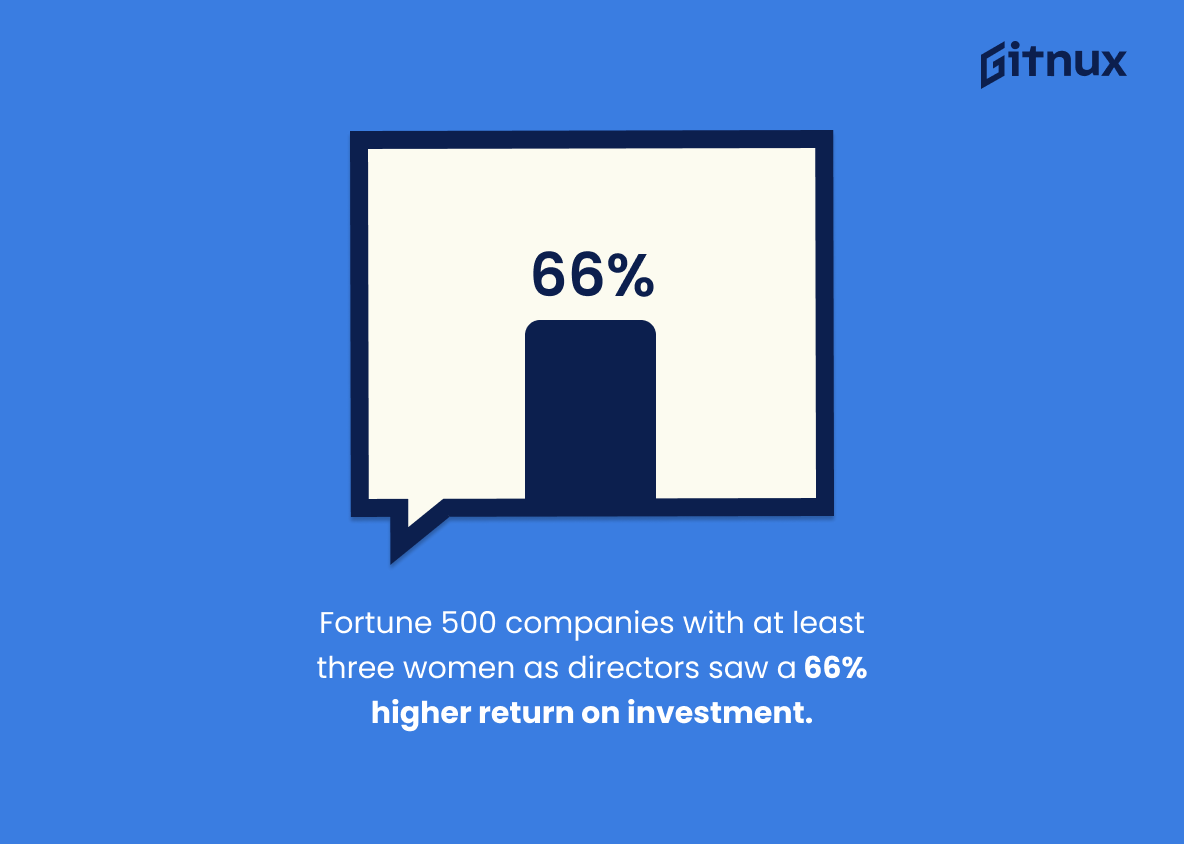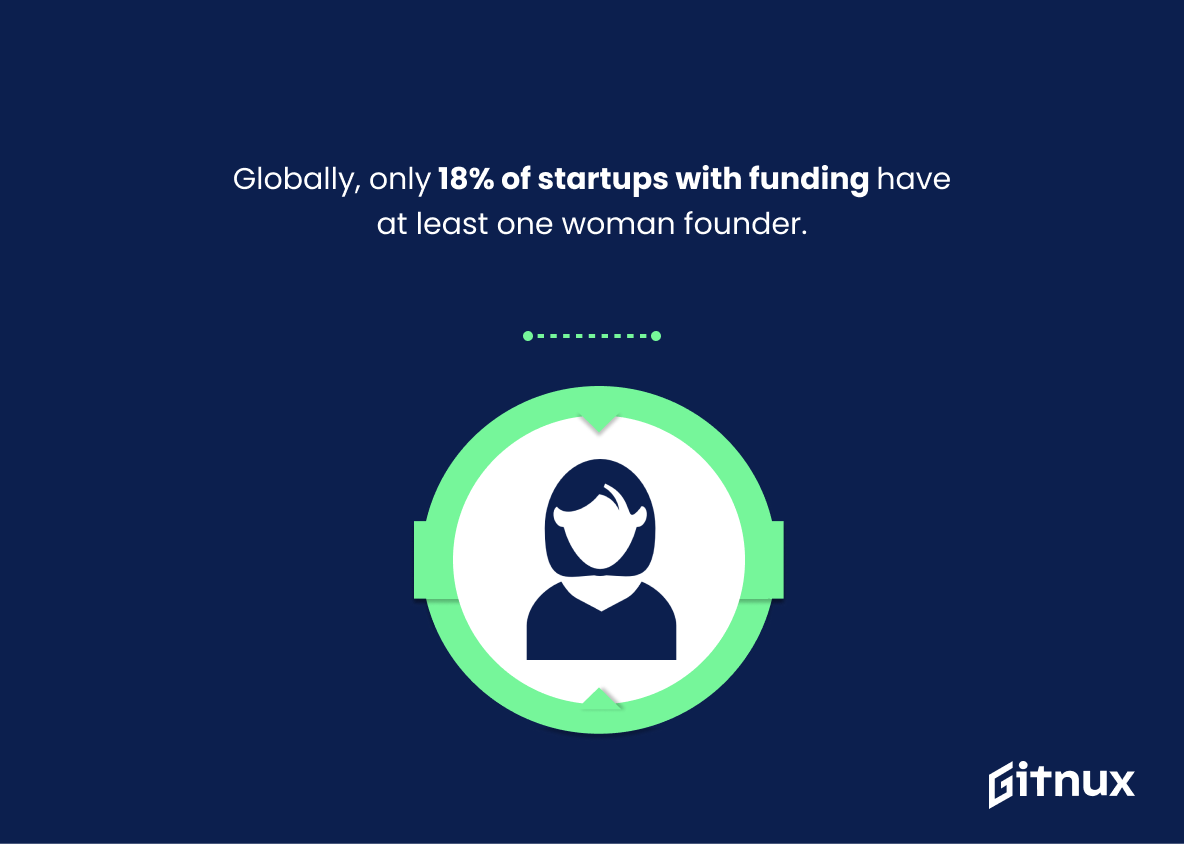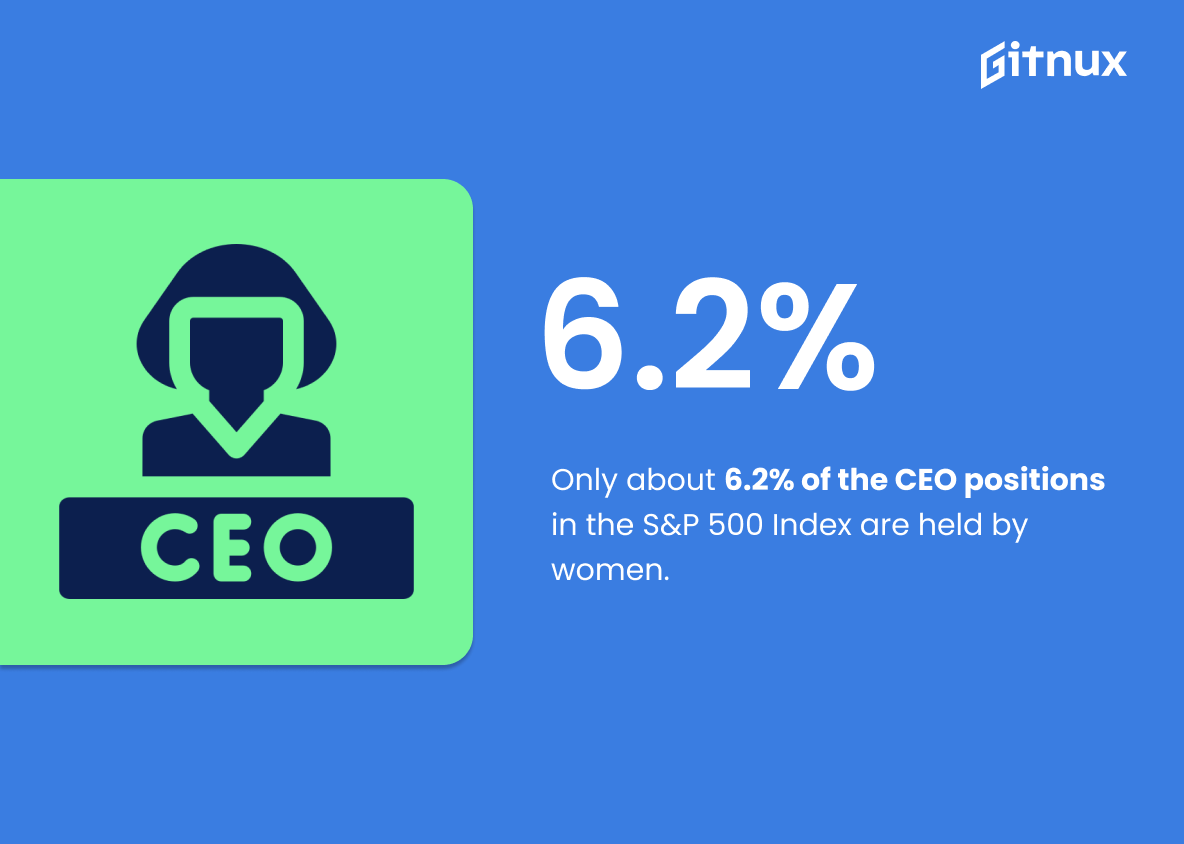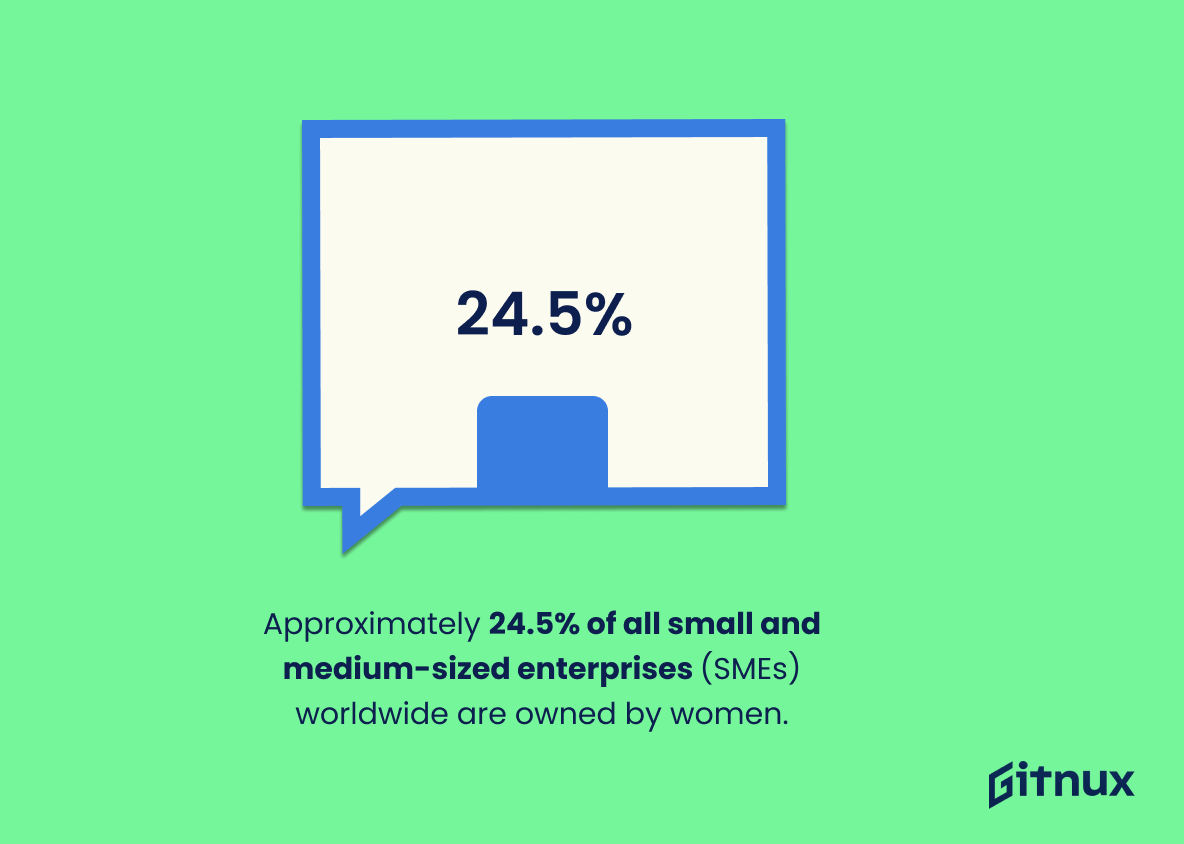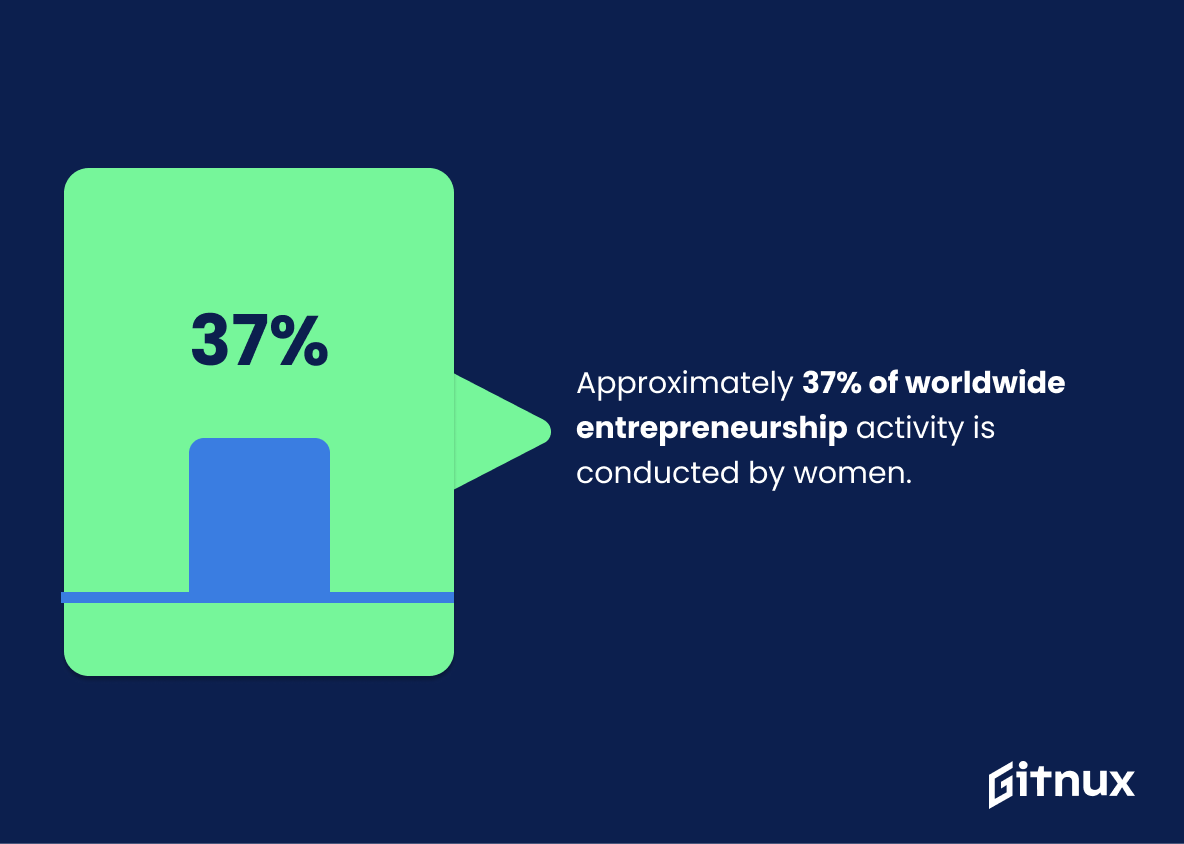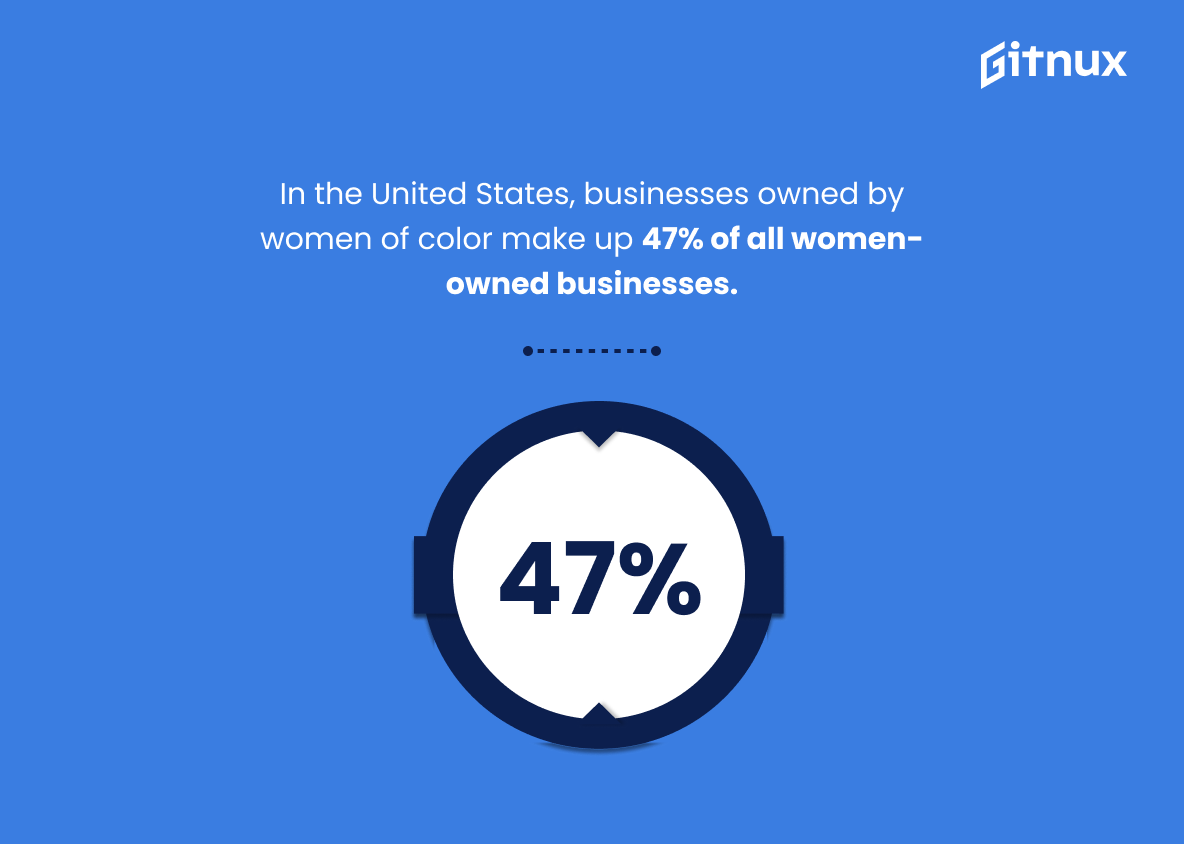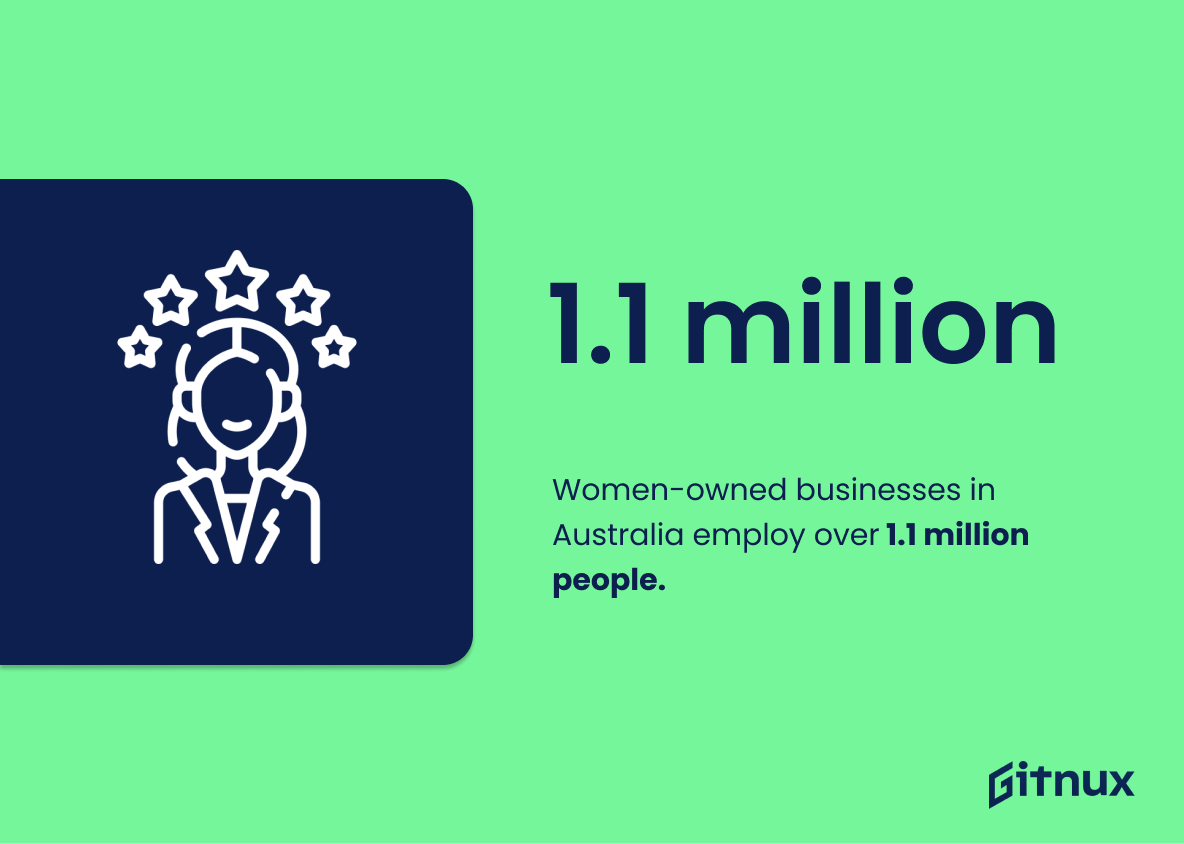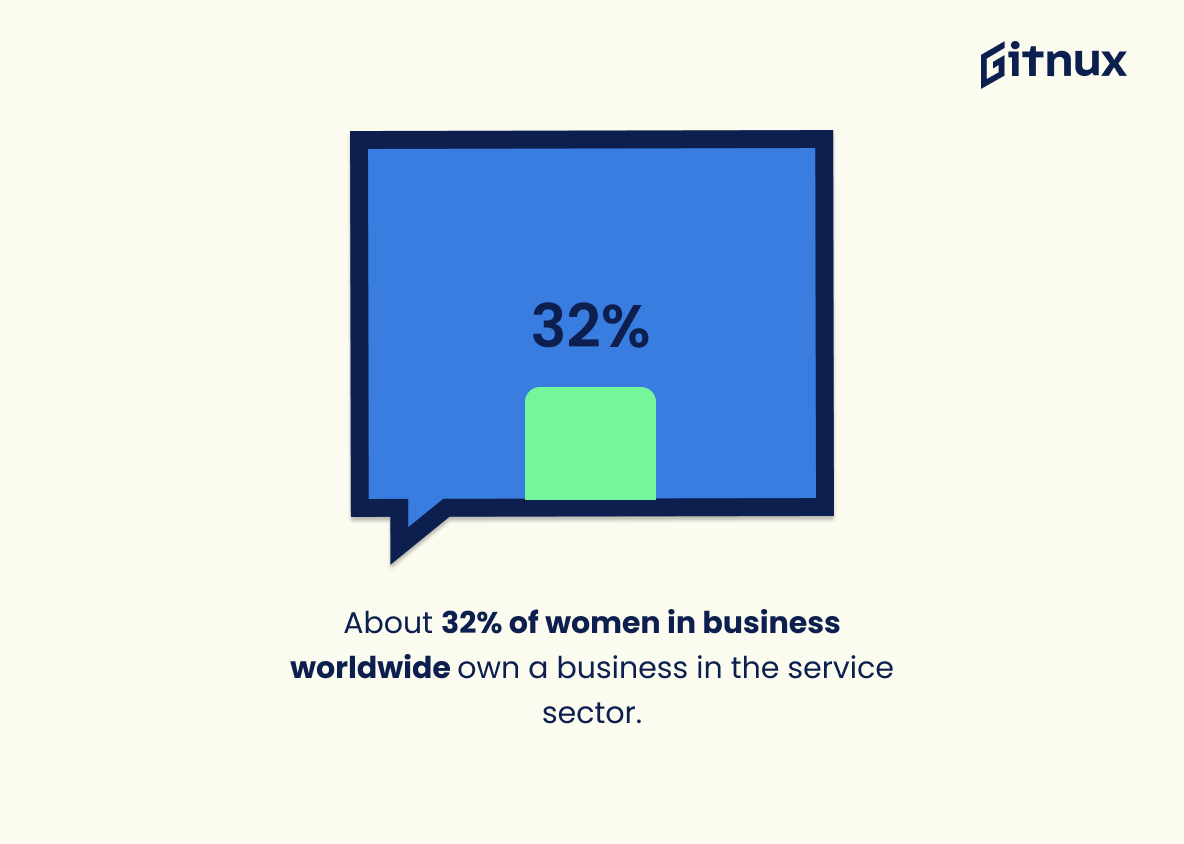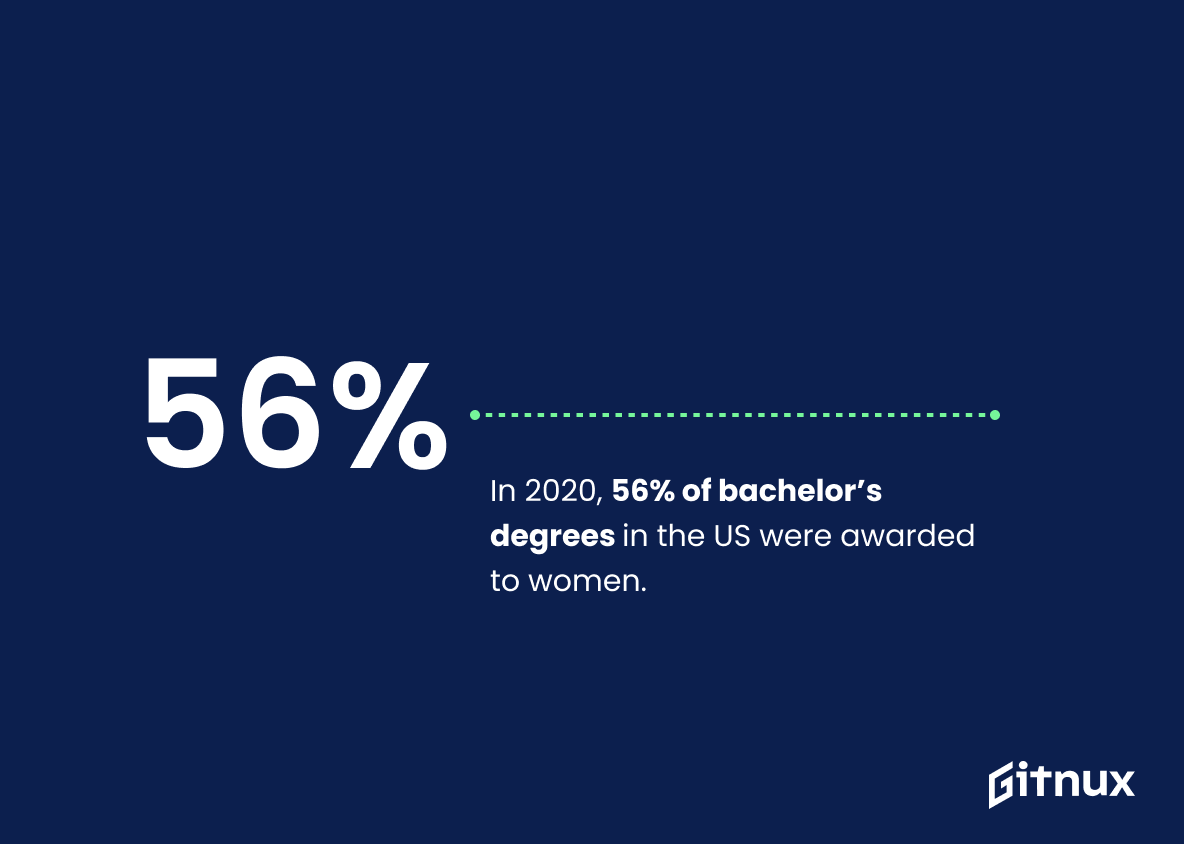It is no secret that women have been underrepresented in the business world for many years. Despite this, there has been a steady increase of female entrepreneurs and business owners over the past few decades. To better understand how far we’ve come, let’s take a look at some statistics on Women In Business from around the globe:
1. 39% of all privately-held firms in the United States are owned by women;
2. 40% of new entrepreneurs in 2019 were women;
3. Women-led businesses contributed £3.5 billion to UK’s annual GDP as of 2021;
4. 38% of small business owners in Canada are women;
5 Fortune 500 companies with at least three female directors saw 66% higher return on investment than those without any female directors; 6 Only 20% US woman-owned businesses had revenues exceeding $1 million annually ; 7 US woman entrepreneurs generate $1 trillion revenue each year ; 8 Globally only 18 % startups with funding have one or more females founders ; 9 6 . 2 % CEO positions S & P 500 Index held by females ; 10 24 . 5 % SMEs worldwide owned by females 11 35 % higher ROI for Woman led Startups compared to male led ones 12 37 % Worldwide Entrepreneurship activity conducted by Females 13 25 percent computing roles filled up By Females 14 47 Percent Of All U . S Female Owned Businesses Are Owned By Women Of Color 15 1 Million People Employed By Australian Woman Led Firms 16 32 Percent Service Sector Is Dominated By Female Owners 17 56 Percent Bachelor Degrees Awarded To Females In 2020 18 Average Revenue For Privately Held Companies With A Female Owner Was 143 , 431 19 28 Percentage Executive / Senior Level Managers Private Industries Were Filled Up By Females 20 Latin American And Caribbean Based Woman Generate On Average 15000 Less Sales Than Men
This statistic is a powerful reminder of the progress women have made in the business world. It shows that women are increasingly taking the initiative to become entrepreneurs and are making their mark in the business world. This statistic is a testament to the hard work and dedication of women in business and serves as an inspiration to other women who may be considering starting their own business.
In the UK, women-led businesses contributed £3.5 billion to the country’s annual GDP as of 2021.
This statistic is a powerful reminder of the immense economic impact that women-led businesses have had on the UK’s economy. It highlights the importance of supporting female entrepreneurs and recognizing their contributions to the country’s GDP. It also serves as a reminder that when women are given the opportunity to succeed, they can make a significant difference to the economy. This statistic is a testament to the potential of women in business and should be celebrated.
Women In Business Statistics Overview
Women represent 38% of small business owners in Canada.
This statistic is a powerful reminder of the incredible impact women have had on the small business landscape in Canada. It speaks to the strength and resilience of female entrepreneurs, who have been able to overcome the many challenges they face in order to create successful businesses. It also serves as an inspiration to other women who may be considering starting their own business, showing them that it is possible to succeed. Finally, it highlights the importance of supporting women in business, both financially and through mentorship, in order to ensure that their success continues.
Fortune 500 companies with at least three women as directors saw a 66% higher return on investment.
This statistic is a powerful testament to the positive impact that women can have on a company’s bottom line. It shows that when women are given a seat at the table, the return on investment is significantly higher. This is an important reminder that diversity in the workplace is not only beneficial for creating a more equitable and inclusive environment, but it can also be a major boon to a company’s financial success.
Only 20% of women-owned businesses in the US have annual revenues exceeding $1 million.
This statistic is a stark reminder of the challenges that women-owned businesses face in achieving success. It highlights the need for more support and resources to help these businesses reach their full potential. It also serves as a call to action for those in positions of power to create an environment that is more conducive to the success of women-owned businesses.
Women entrepreneurs in the United States generate $1.8 trillion in revenue.
This statistic is a powerful reminder of the immense economic impact that women entrepreneurs have in the United States. It speaks to the potential of women in business and the potential for them to create and drive economic growth. It also serves as a reminder of the importance of investing in and supporting women-owned businesses, as they are a major contributor to the US economy.
Globally, only 18% of startups with funding have at least one woman founder.
This statistic serves as a stark reminder of the gender disparity that exists in the business world. It highlights the fact that women are still significantly underrepresented in the startup space, despite the fact that they are just as capable of launching successful businesses as their male counterparts. This statistic is a call to action for businesses to take steps to ensure that women are given the same opportunities and resources as men when it comes to starting and growing their businesses.
Only about 6.2% of the CEO positions in the S&P 500 Index are held by women.
This statistic serves as a stark reminder of the gender disparity that exists in the business world. It highlights the fact that women are still vastly underrepresented in the highest echelons of corporate America, and that there is still a long way to go before true gender equality is achieved.
Approximately 24.5% of all small and medium-sized enterprises (SMEs) worldwide are owned by women.
This statistic is a powerful reminder of the progress women have made in the business world. It shows that women are increasingly taking the lead in the SME sector, and that they are capable of achieving success in a traditionally male-dominated field. This statistic is a testament to the hard work and dedication of female entrepreneurs, and it serves as an inspiration to other women who are looking to start their own businesses.
Women-led startups have a 35% higher return on investment compared to male-led startups.
This statistic is a powerful reminder of the potential of women-led startups and the value they can bring to the business world. It highlights the importance of investing in female entrepreneurs and the potential for higher returns on investment. This statistic is a testament to the success that can be achieved when women are given the opportunity to lead and innovate. It is a powerful reminder that investing in women-led startups is not only beneficial for the economy, but also for the individual investor.
Approximately 37% of worldwide entrepreneurship activity is conducted by women.
This statistic is a powerful reminder of the immense potential of female entrepreneurs. It highlights the fact that women are making a significant contribution to the global economy, and that their efforts should be celebrated and encouraged. It also serves as a reminder that there is still much work to be done in order to ensure that women have equal access to resources and opportunities in the business world.
In the United States, businesses owned by women of color make up 47% of all women-owned businesses.
This statistic is a powerful reminder of the immense contributions women of color have made to the business world. It highlights the fact that women of color are not only succeeding in business, but are also leading the way in terms of entrepreneurship. This statistic is a testament to the strength and resilience of women of color, and serves as an inspiration to other women looking to make their mark in the business world.
Women-owned businesses in Australia employ over 1.1 million people.
This statistic is a powerful reminder of the immense impact women-owned businesses have on the Australian economy. It highlights the fact that women are not only capable of starting and running successful businesses, but that they are also creating jobs and contributing to the growth of the nation. This statistic is a testament to the strength and resilience of women entrepreneurs and a reminder of the importance of supporting and encouraging more women to become business owners.
About 32% of women in business worldwide own a business in the service sector.
This statistic is a powerful reminder of the impact women are having in the business world. It highlights the fact that women are not only succeeding in the service sector, but are also taking ownership of their own businesses. This statistic is a testament to the hard work and dedication of women in business, and serves as an inspiration to other women who are looking to make their mark in the business world.
In 2020, 56% of bachelor’s degrees in the US were awarded to women.
This statistic is a powerful reminder of the progress women have made in the business world. It shows that women are increasingly taking on leadership roles and achieving success in their chosen fields. It also highlights the importance of providing equal opportunities for women in the workplace, as well as the need for more support and resources to help them succeed. This statistic is a testament to the hard work and dedication of women in business, and it serves as an inspiration for others to follow in their footsteps.
Women-owned firms in the US generate an average revenue of $143,431, compared to average revenue of $726,752 for all privately-held firms.
This statistic serves as a stark reminder of the gender gap in business. It highlights the fact that, despite the progress made in recent years, women-owned firms still lag far behind their male-owned counterparts in terms of revenue. This disparity is a major obstacle to women’s economic empowerment and should be addressed in order to create a more equitable business landscape.
Women represent only 28% of executive/senior level managers in US private industries.
This statistic is a stark reminder of the gender gap that still exists in the business world. It highlights the fact that women are still underrepresented in executive and senior level positions, despite the progress that has been made in recent years. This statistic is a call to action for businesses to take steps to ensure that women are given equal opportunities to succeed in the workplace.
Women entrepreneurs in Latin America and the Caribbean generate on average $15,000 less in sales than those led by men.
This statistic is a stark reminder of the gender gap that exists in the business world. It highlights the fact that women entrepreneurs in Latin America and the Caribbean are not receiving the same opportunities as their male counterparts, and are being held back from achieving their full potential. This statistic is a call to action for businesses to take steps to ensure that women entrepreneurs are given the same opportunities and resources as men, so that they can reach their full potential and contribute to the economy.
Conclusion
The statistics presented in this blog post demonstrate the progress that has been made towards gender equality in business, as well as the challenges still faced by women entrepreneurs around the world. Women-owned businesses make up a significant portion of privately-held firms across many countries and regions, yet they often generate lower revenues than those led by men. Additionally, there is an underrepresentation of women at executive/senior level management positions and within tech roles. These figures highlight both how far we have come and what more needs to be done to ensure equal opportunities for all genders when it comes to entrepreneurship.
References
0. – https://www.guidantfinancial.com
1. – https://www.gemconsortium.org
2. – https://www.americanexpress.com
3. – https://www.worldbank.org
4. – https://www.kauffman.org
5. – https://www.about.americanexpress.com
6. – https://www.mastercard.com
7. – https://www.fortune.com
8. – https://www.natwestbusinesshub.com
9. – https://www.asbfeo.gov.au
10. – https://www.nces.ed.gov
11. – https://www.catalyst.org
12. – https://www.techcrunch.com
13. – https://www.sba.gov
14. – https://www.bdc.ca
